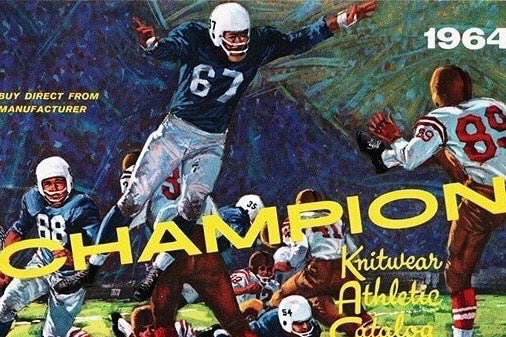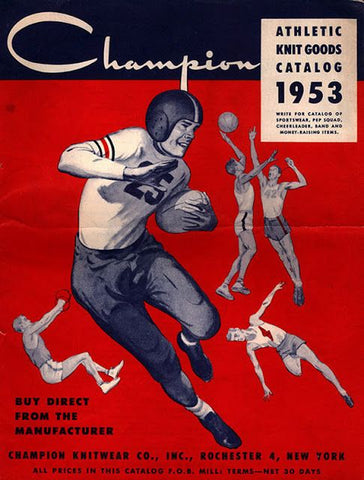
Brand History - Champion
Many brands that were popular in the 90s experienced a decline in popularity throughout the 2000s and 2010s. A good example for that can be seen in Starter who dominated streetwear with the jackets and caps back in the days - read more about it here!
Another brand that experienced a similar decline, but is already back on its feet and once again a big player, is Champion. From hanging in the last corners of Walmart and only being a shadow of its former self, to having collaborations with heavy hitters like Supreme, Rick Owens, Vetements and many other household names, Champion's comeback was unlike others.

Supreme x Champion (2015)
But let's start at the beginning - Champion was found in 1919 as "Knickerbocker Knitting Mills" by Simon Feinbloom and his two sons William and Abraham in Rochester, New York. Champion quickly became one of the first household names in Sportswear. They found their direct competitors in Russel Athletics, the inventors of the Sweatshirt.
In 1926, Champion partnered with Wentworth Military Academy and provided them with school uniforms, becoming the first team to ever be supported by Champion. And then, in 1934, Champion introduced collegiate sweatshirts and tees with the University of Michigan. This line of apparel revolutionized collegiate apparel and also included the first hooded sweatshirt (aka. Hoodie) ever. Developed as a warm-up garment, today, the hoodie is one of the most iconic pieces of clothing in modern history. Because of their quality, it didn't take long until athletes and non-athletes were all wearing Champion pieces.

Champion catalog (1953)
Name Changes and Inventions
What was founded as "Knickerbocker Knitting Mills" was renamed to "Champion Knitting Mills Inc." in the 1930s. And in the 1950s and 1960s, the company was called "Champion Knitwear Company", only getting its current name "Champion Products" in 1967. Over the years, they not only provided high quality products, but also invented a series of modern pieces and garment technologies. This for example includes the already mentioned hoodie and their signature reverse weave technology, which were both invented in 1934, as well as the first sports bra in 1977.
Naturally, the brand also had a strong connection with the big US leagues, since they supplied many teams (especially in the NBA and NFL) with their garments. And from 1989 until 2001, Champion even became the official outfitter of all 27 NBA teams, as well as providing the legendary 1992 Dream Team and the first Women's Dream Team in 1996 with their sports gear.


The Great Comeback
And then 2017 came and suddenly Champion was everywhere. Their comeback also influenced similar effects for other brands such as Fila, Kappa or Ellesse, however, none of them did it quit like Champion. Additionally, the athleisure trend of recent years also surely helped to get them back on their feet.
The iconic "C" logo we all know and love was introduced back in 1956 and can ever since be found on the left sleeve of each sweatshirt. But because the brand is more than 100 years old and over time not only had different logos but also names, there are also many different size tags with which you can identify the age of a (vintage) Champion piece. We collected an overview of the tags for you down below! Beware that regular Champion pieces and "reverse weave" pieces may have different tags. Also, all information on the list comes without guarantee and this list makes no claim to completeness.
Champion-Tags:
|
1940s: |
1950s: |
1950s: |
1950s: |
|
|
|
|
|
|
1960s: |
1960s: |
1960s: |
1960s: |
|
|
|
|
|
|
1960s: |
1970s: |
1970s: |
1980s: |
|
|
|
|
|
|
1980s: |
1980s: |
1990s: |
1990s: |
|
|
|
|
|
|
2000s: |
2000s: |
2010s: |
2010s: |
|
|
|
|
|
Reverse Weave Tags:
| 1960s: | 1960s: | 1970s: | 1970s: |
 |
 |
 |
 |
| 1970s: | 1970s: | 1970s: | 1980s: |
 |
 |
 |
 |
| 1990s: | 1990s: |
 |
 |
If you want to learn more about All Things Vintage, also check out our series of the same name - read more about it right here!



















